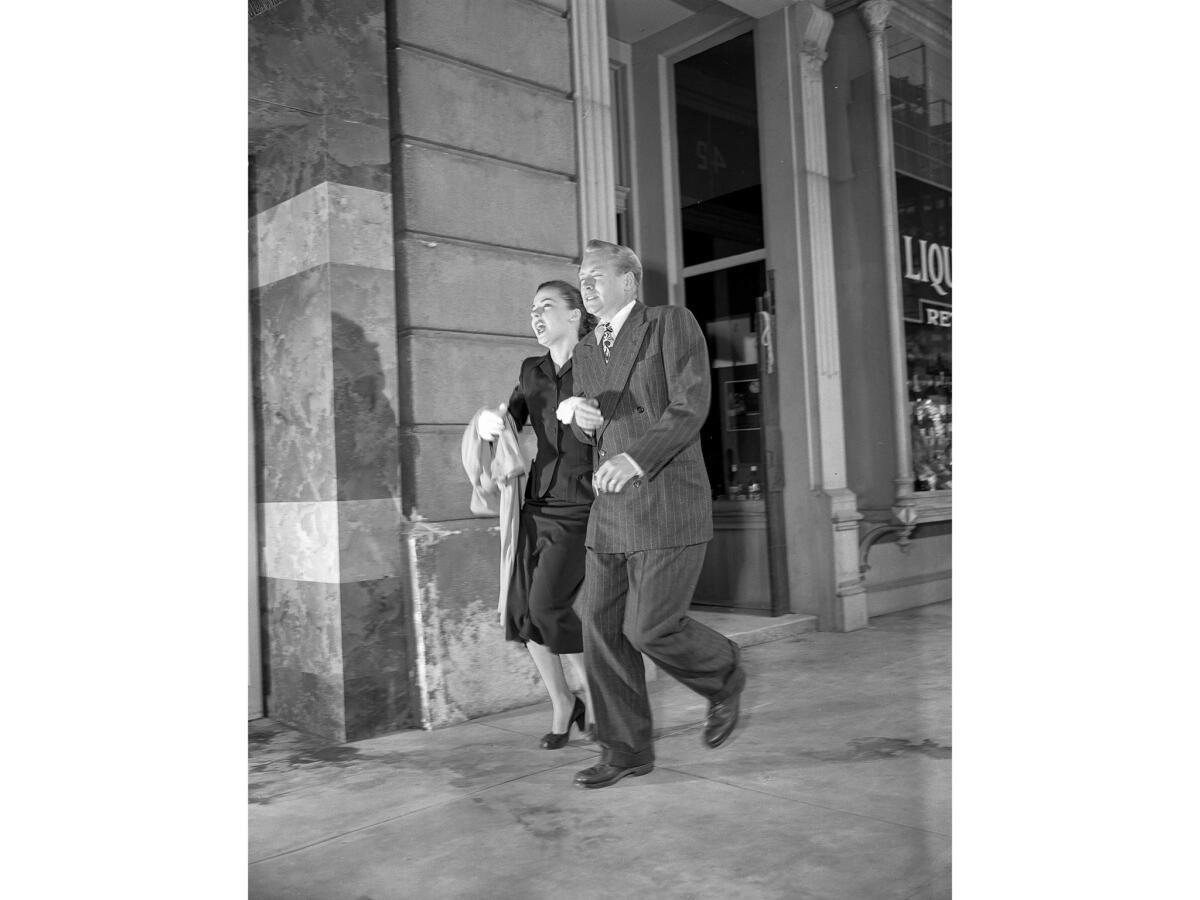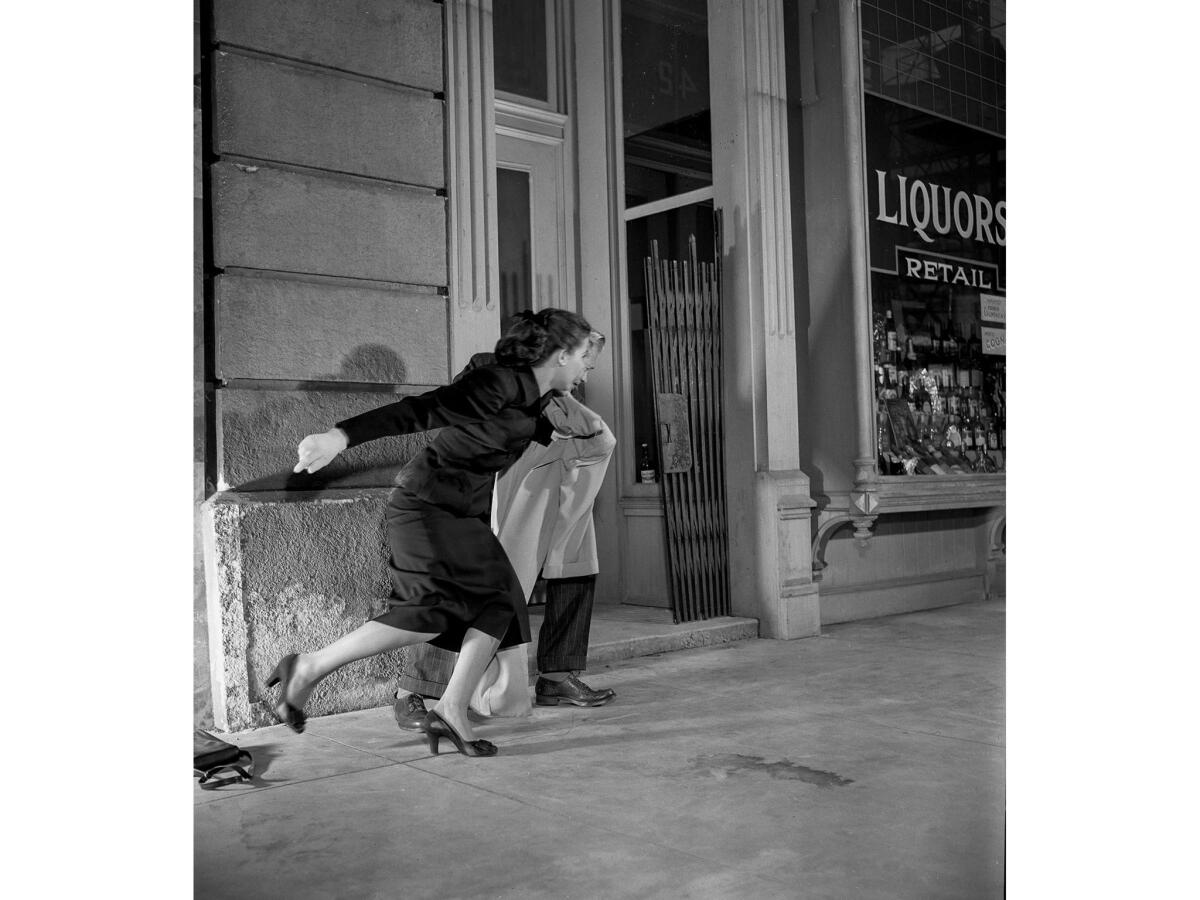From the Archives: A-Bomb survival guide

- Share via
Following the end of World War II, the United States held a monopoly on nuclear weapons — until the Soviet Union tested a nuclear device in 1949. In 1950, the United States began its Cold War Civil Defense education program.
On Aug. 29, 1950, the Los Angeles Times published its version of the Federal Government A-Bomb survival guide. Six images accompanied the full-page guide. (One of the images is missing from the archives.) The Los Angeles Times story reported:
Thousand of lives can be saved in the event of any atomic attack by observance of only four rules formatted by the U.S. government. Since a picture is worth many words, The Times supplies the accompanying photographs. This page may serve as a guide.
The rules, somewhat amplified, are:
1 – Act promptly. Immediate action can mean the difference between your life and death. The first indication of an unexpected atomic air burst is a sudden increase in the general illumination. It is imperative to train yourself to avoid the instinctive tendency to look at the light source. Instead, do everything possible immediately to cover all exposed parts of the body.

2 – The best plan, in the open, is to drop instantly to the ground, while curling up to shade the bare arms and hands, neck and face with the clothed body. The curled-up position should be held for 10 seconds. The immediate danger is then over. It then is permissible to stand up and see what action is advisable.
3 – If in the street when the explosion occurs, no immediate attempt should be made to reach a shelter unless a doorway, or corner or a tree is but a step away. In the event that it can be done with no delay, it is advisable to press the crouched body against a building to avoid flying debris. This is especially true if shock waves arrive almost as quickly as the rays.
4 – A person who is inside a building or home when a surprise attack occurs should drop to the floor with the back to a window. Or, if it can be done instantly without prolonging exposure to the light, he should crawl behind or beneath a table, desk, counter, etc. This will provide a shield against splintered glass. The air blast wave my arrive several seconds after the radiation danger is over. So it’s expedient to avoid windows.

The original Aug. 29, 1950, caption reported: UNEXPECTED — An atomic bomb (presuming United States and Russia reached state of open war) could explode above and behind you without warning. Lora Elliot and Lyle Bettger, Paramount studio actors, demonstrate.

The original caption for the above image reported: FLASH — First indication of an atomic air burst is a sudden and tremendous increase in the general illumination. First natural reaction to overcome is a tendency to look at the light source. Here the couple resist impulse to look at deadly ray.
The original caption for image at top of this blog post reported: PROTECTION — They drop instantly to the ground, covering as much of body as possible against searing rays. Coat thrown over face will help. Air blast which causes wreckage arrives some seconds after instantaneous light flash.

Original caption: TIME TO RUN — After 10 seconds the couple rise and look quickly for better cover against flying wreckage. These pedestrians dash around corner into a doorway.

Original caption: JUST AFTER — Whirling away from window, she drops to floor and huddles under her desk, thus obtaining protection from light rays and flying glass. She remains beneath the protection of desk for at least a minute.